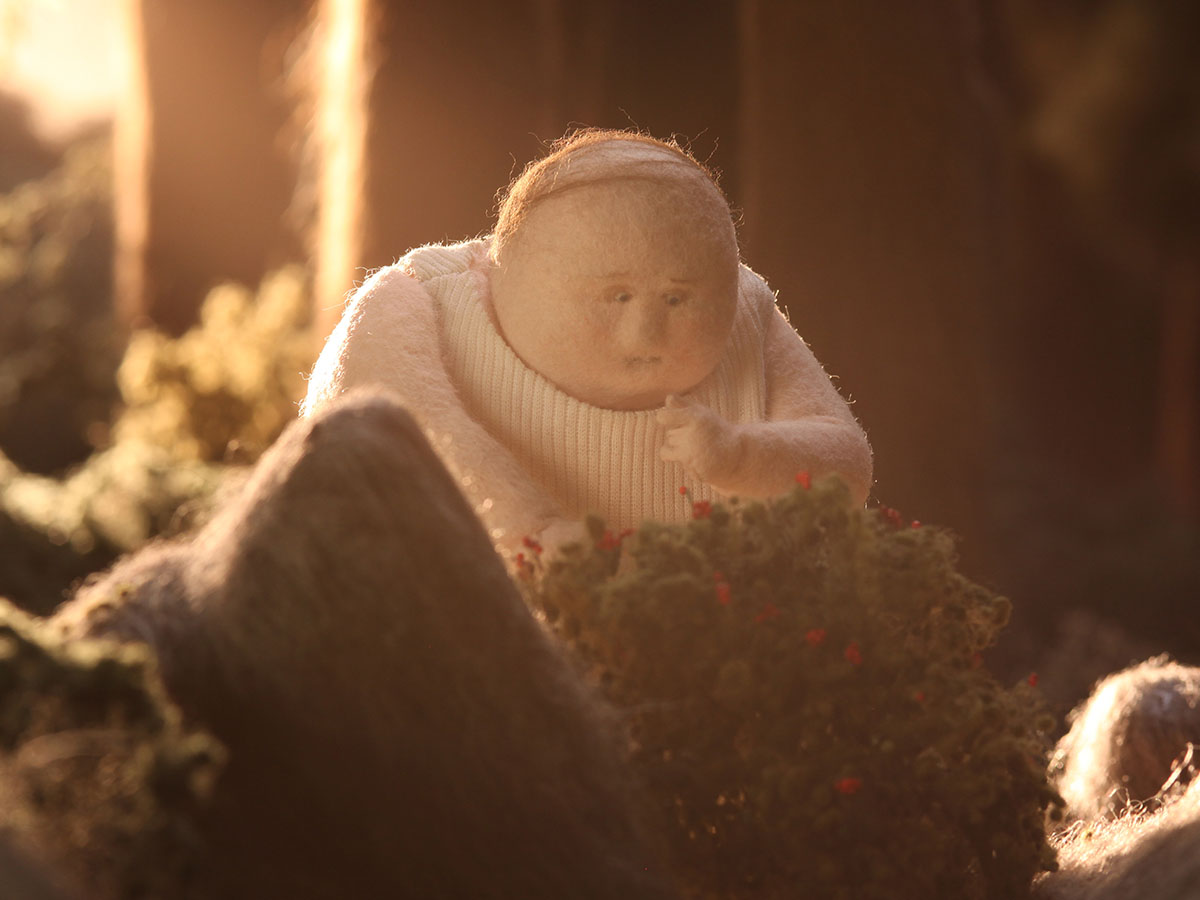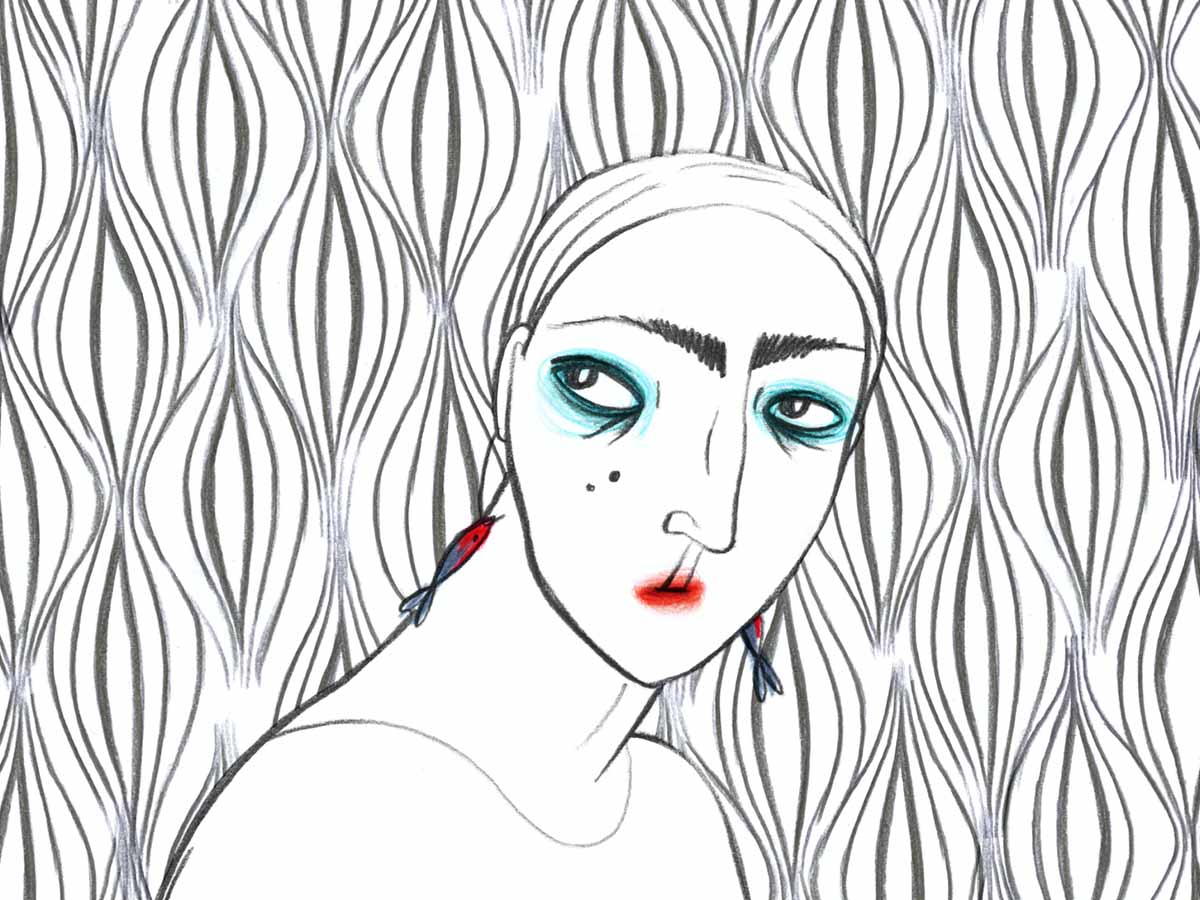
Oh Willy...
Fifty-something Willy returns to the naturist community, where he spent his youth, to visit his dying mother. When she dies shortly after he arrives, Willy is confronted with the choices he made in life. In a state of sadness, he retreats into the forest. After a rough start, he finds himself under the maternal protection of a gentle, hairy beast.
Soft wool, ambiguous and revealing, wonderfully fragile puppets reflecting a human’s tumultuous growth: Oh Willy…, the fantastic stop-motion film from directing duo Emma De Swaef and Marc James Roels, reads as a surrealist story about loneliness and grief.
Kryzstof Kiéslowksi’s masterpiece La Double vie de Véronique (1991) introduces one of its characters in a most magical scene. Véronique takes her students to see a puppet show. A set of hands reaches for an elegant dancer puppet, dormant in a red box. Next, there is a buzzing in the crowd; the kids in the audience are eager to get a closer look. The puppet girl dies and is reborn as an angel. Sure, the scene is sad, yet also fascinating. The puppet seems more apt to express emotions than the humans who make up the crowd. A similar enigmatic sadness permeates Oh Willy… The short film marked the first professional venture of the puppeteering duo Emma De Swaef and Marc James Roels. Later collaborations, such as the ironic Ce magnifique gâteau (2018), dealing with Belgium’s colonial history, saw the two gaining widespread acclaim.
We witness an older woman in the kitchen through the door frame of a sunny living room. She is naked and storing away some mugs. While still holding a serving tray in her hands, she starts to shiver and shake. She collapses. A short struggle for life follows, and eventually, her body becomes flaccid. She has passed away. In the subsequent shot, we see a framed picture of young and innocent Willy next to a baby goat. Years have passed, and Willy is now presented as a soft and gentle man. Not solely because of his wool and glass fiber make, but more specifically because of the type of life he lives—a life of solitude and silence. Willy is afraid of agency, of going into the world with his head held high. He is used to the nudist colony that formed his surroundings when he was growing up. A warm and safe motherly bosom where he thrived. A kingdom of wool, with a steel gate that is.
When imagining a modern-day film character, Willy isn’t exactly what comes to mind. His puffy face, bellowing belly, curved back, and acute state of escapist dreaminess give him all the allure of a man-child, easy prey to our mean and angry world. After his mother’s passing, he finds solace in the landscapes of magic realism. Like many of us, Willy longs for freedom. De Swaef and Roels’ choice of a nudist colony as the backdrop for his story makes sense in this light.
Belgium is no stranger to surrealism and magic realism. The duo of directors owes a debt to animation pioneer Raoul Servais. His films Chromophobia (1965), Operation X-70 (1971), and the daunting feature Taxandria (1994), all testify to the typically Belgian surrealism and magic realism. Think of painters like René Magritte and Paul Delvaux and writers such as Johan Daisne and Hubert Lampo, and soon, it becomes clear that De Swaef-Roels are continuing this long-standing tradition. Their films are absurd, always, yet never lose focus of profound human emotions. The poetic and dull are inseparable: nudity and vomit mix with dark humor and grand ideas. Oh Willy… is partly based on Diane Arbus’ photography. She took to a nudist site in the sixties and documented day-to-day life. The resulting pictures were equally confronting as mundane. The banal rendered reactionary.
Willy’s roots can also be found in the main character of De Swaef’s graduating film Soft Plants (2008). The short documentary follows an old and lonely officer who finds refuge in his thoughts and fantasies of a dark and magical forest. This longing for safety, a stubborn passivity, or even feigned innocence is woven into the duo’s oeuvre. Ce magnifique gâteau! shows its five main characters marinating in self-pity, yet all capable of committing colonial cruelties. The first part of the Netflix production The House (2022)—directed by De Swaef and Roels—introduces a family unquestioningly accepting a mysterious offer that makes them the owners of an immense gothic mansion. Their ignorance and greed soon lead to their downfall as the house claims its victims. Only the children escape this fate. Infantility proves to be a blessing. The same goes for Willy. He’s tossed around by life, like a wool football, yet manages to connect with and even excel in the company of a wild and furry creature whose anarchy and unpredictability are a surprising safe haven.
Oh, Willy… ’s wool universe feels secure in all its softness. Yet, the film tackles intense themes of vulnerability and sadness. The narrative is inextricably linked with the materials used; they often contradict each other and create a peculiar tension. Reading Oh Willy… solely as a provoking piece about nudists would not do justice to the complexity of this subtle study of a person losing himself in loneliness and grief. The extreme introspection, the grandeur of certain sets, and Wagner’s epic composition Das Rheingold: contrast is the basis of this film. De Swaef and Roels create a universe where its inhabitants and building blocks are allowed their imperfections. It’s in these moments, in between textures, in between deficiency and growth, that Oh Willy… excels. Willy’s world is soft, warm, alienating, but ultimately freeing. Like Kiéslowski’s dancer, Willy proves that puppets hold a lot of wisdom for humans. They are a blank page onto which we can project our values and fascination. If our pondering becomes too cloudy, they allow us this indulgence.
A woman trips and falls while rushing around the house. She gets up only to discover that her home has unusual features—it is built from paradoxes, filled with illusions, and covered with patterns.



